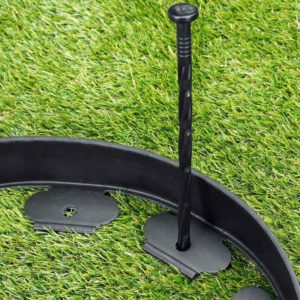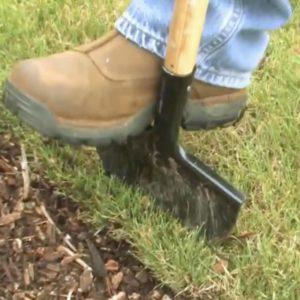Buy Gardening Edging Online
3 DAY APRIL SUPER SALE … Don’t Miss Out
-
Sale!

Garden Edging Kit | Landscape Edging | Lawn Edging
$10 – $13 -
Sale!

Plastic Stone Garden Edging | Decorative Lawn Border Edging (per 24cm section)
Original price was: $6.$4Current price is: $4. -
Sale!

Stainless Steel Garden Edge | Stainless Garden Edging
$25 – $35 -
Sale!

Weathered Steel Garden Edge | Weathering Steel Edging per m
$59 – $69 -
Sale!

Corten Steel Garden Edge | Rusted Garden Edging
$59 – $69 -
Sale!

Steel Edger Lawn Tool | Landscaping Edging Tool | Manual Grass Edger
Original price was: $119.$99Current price is: $99. -
Sale!

Rubber Mallet With Wood Handle | Rubber Hammer Head | Double Faced Soft Hammer
Original price was: $29.$25Current price is: $25. -
Sale!

Plastic Edging Spikes | Spiral Nylon Landscape Stake | Landscape Anchoring Nails
$19 – $99 -
Sale!

Ground Staples | U-Shaped Garden Pegs | Garden Stakes/Spikes
Original price was: $79.$59Current price is: $59. -
Sale!

Half Moon Shovel | Half Moon Edger Tool | Manual Step Edging Tool
Original price was: $119.$99Current price is: $99.
10 Best Gardening Edging Ideas for a Beautiful Bed
Make your garden look more finished with these great landscaping edging ideas.
Whether you’re growing herbs and flowers or fruits and veggies, garden edging is the finishing touch for any type of garden.
When placing landscape edging around garden beds, they’ll look more polished and your garden mulch will stay in place. Plus, it will add character and charm to your home’s curb appeal. For the best effect, look for edging that coordinates with the style of your house.
Here are some of the best materials for edging your garden beds.
1. Plastic Garden Edging
Plastic is relatively easy to install. It’s available in long rolls of edging you peg into the ground.
Pros: Inexpensive and long-lasting
Cons: basic in design
2. Paver Stones
Pavers made from concrete are nearly indestructible. But they’re heavy to handle and time-consuming to install, so plan on a few days of heavy carrying and digging. You can make paths with pavers, or just use them for edging beds.
Pros: Lasts forever and very attractive
Cons: Time-consuming to install
3. Natural Rock
Rocks are available in an array of sizes, colors, and shapes, and creeping flowers look amazing tumbling over them! Simply line the edges of each bed, but opt for rocks that are the size of a soft ball or larger for the most visual impact. Visit a nursery or garden center for options.
Pros: Lasts forever
Cons: Takes time to fit them together in a pleasing way
4. Metal
Many types of steel edging is available which can be hammered into the ground. Painted finishes or stainless steel last the longest, but unfinished metal such as weathered steel has an attractive rustic appearance for country gardens.
Pros: Relatively easy to install
Cons: Hard on your hands; wear heavy gloves
5. Flagstone
Flagstone comes in many different shades and thicknesses. Set the flat pieces along the garden edge, or stack them for a classic look in a cottage or country garden. Check with your local nursery or garden center for options.
Pros: Pretty and lasts forever
Cons: Relatively expensive
6. Brick
Lay bricks in a shallow trench on their side with the wide side down, or stand them upright. The hardest part is getting everything level. Hint: Use a rubber mallet and line level on a string.
Pros: Lasts forever, relatively inexpensive
Cons: Labor-intensive to install
7. Poured Concrete
This is typically not a DIY job for newbies, as you must build a form, then mix and pour concrete into the mold. Consider hiring an expert, because mistakes are not easily fixed.
Pros: Lasts a long time
Cons: Can’t easily adjust the layout of the planting bed in future years
8. Shovel Edging
Here’s a great idea if you don’t like the look (or expense) of edging: Use an edging shovel, which looks like a half-moon, or a spade, to cut the grass away and create a sharp edge, which keeps grass from creeping into beds.
Pros: Clean look that works for all garden styles
Cons: Must be done annually, difficult in clay or rocky soils
9. Landscape Timber
If you’re handy with a saw, landscape timbers are a cost-effective method of edging. They’re often pressure-treated to prevent rotting. You’ll need to level the ground and cut sections as needed.
Pros: Inexpensive and long-lasting
Cons: Cannot be used to create curved borders
10. Decorative Fence
Small sections of fence are super-easy for lining a garden perimeter. Many different types and sizes exist including metal, wood, and plastic, so you’ll find the one that suits your garden’s style.
Pros: Easy to place
Cons: Easily damaged, doesn’t hold mulch in place
